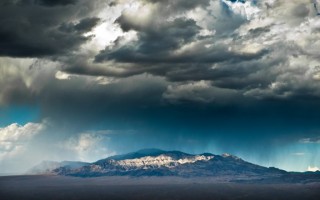Traveling the globe offers an unparalleled opportunity to witness the majesty of nature and the ingenuity of humankind. From ancient ruins to modern architectural marvels, the world is home to a plethora of iconic landmarks that have stood the test of time and continue to captivate the hearts and minds of visitors from all corners of the earth. This comprehensive guide will take you on a virtual journey through some of the most renowned sites, offering insights into their history, cultural significance, and the awe-inspiring features that make them must-see destinations.
1. The Great Wall of China (中国长城)
Stretching over 13,000 miles across northern China, the Great Wall is an architectural feat that dates back to the 7th century BC. Its primary purpose was to protect Chinese empires from invasions by various nomadic groups. Today, it stands as a symbol of China's enduring strength and serves as a testament to the resilience of its people. Visitors can explore various sections of the wall, with Badaling being the most popular due to its accessibility and well-preserved condition.
2. The Pyramids of Giza (吉萨金字塔群)
.jpg)
Located in Egypt, the Pyramids of Giza are the last remaining of the Seven Wonders of the Ancient World. The most famous of these pyramids, the Great Pyramid of Giza, was built for Pharaoh Khufu around 2580–2560 BC. It is a masterpiece of engineering and design, with its precise alignment and massive scale. The pyramids are surrounded by a necropolis, which includes the Great Sphinx, another iconic symbol of ancient Egypt.
3. The Colosseum (罗马斗兽场)
Rome's Colosseum, also known as the Flavian Amphitheatre, is an iconic symbol of Imperial Rome. Constructed between 70-80 AD, it was used for gladiatorial contests, public spectacles, and dramas based on Classical mythology. The Colosseum is an architectural marvel, showcasing the Roman's advanced engineering skills and the use of concrete and arches. Today, it stands as a haunting reminder of the past and a popular tourist attraction.
4. Machu Picchu (马丘比丘)
Perched high in the Andes Mountains of Peru, Machu Picchu is an Incan citadel that was built in the 15th century. Often referred to as the "Lost City of the Incas," it was rediscovered in 1911 by Hiram Bingham. The site is a masterpiece of Incan architecture, with its terraced fields, intricate stonework, and panoramic views of the surrounding mountains. It is believed to have been an estate for the Inca emperor Pachacuti.
5. The Eiffel Tower (埃菲尔铁塔)
The Eiffel Tower, located in Paris, France, is an iron lattice tower named after its engineer, Gustave Eiffel. It was constructed for the 1889 Exposition Universelle and stands as a symbol of French innovation and design. At 324 meters tall, it was the tallest man-made structure in the world until the completion of the Chrysler Building in 1930. The tower offers stunning views of Paris and is a beloved icon of the city.
.jpg)
6. The Taj Mahal (泰姬陵)
Built by Mughal Emperor Shah Jahan in memory of his wife Mumtaz Mahal, the Taj Mahal is an ivory-white marble mausoleum on the south bank of the Yamuna river in the Indian city of Agra. It is widely recognized for its symmetrical beauty, intricate inlays, and the play of light on its surface. The Taj Mahal is a UNESCO World Heritage site and is considered one of the finest examples of Mughal architecture.
7. The Grand Canyon (大峡谷)
Carved by the Colorado River in Arizona, the Grand Canyon is a natural wonder that stretches up to 277 miles long, up to 18 miles wide, and over a mile deep. It is a geological marvel, offering a window into the Earth's history with layers of rock that reveal millions of years of geological activity. The Grand Canyon is a popular destination for hiking, rafting, and sightseeing, with the South Rim being the most accessible.
8. The Acropolis (雅典卫城)
The Acropolis of Athens is an ancient citadel that dominates the modern city from its lofty perch. It contains several ancient buildings of great architectural and historical significance, the most famous of which is the Parthenon. Dedicated to the goddess Athena, the Parthenon is considered the zenith of classical architecture. The Acropolis is a symbol of the democratic ideals that originated in ancient Greece.
9. Stonehenge (巨石阵)
Located in Wiltshire, England, Stonehenge is a prehistoric monument that dates back to around 3000 BC. It consists of a ring of standing stones, each around 13 feet high, seven feet wide, and weighing around 25 tons. The purpose of Stonehenge remains a mystery, with theories ranging from a religious temple to an astronomical observatory. The site is one of the most architecturally and culturally significant prehistoric monuments in the world.
10. The Statue of Liberty (自由女神像)
A gift from France to the United States, the Statue of Liberty was dedicated in 1886 on Liberty Island in New York Harbor. Designed by Frédéric Auguste Bartholdi, the statue represents freedom and democracy and has become a welcoming sight to millions of immigrants arriving in America. The statue's torch, which is visible from miles away, symbolizes enlightenment, and her tablet inscribed with "JULY IV MDCCLXXVI" commemorates the American Declaration of Independence.
11. The Great Barrier Reef (大堡礁)
Stretching over 1,400 miles off the coast of Queensland, Australia, the Great Barrier Reef is the world's largest coral reef system. It is home to a diverse range of marine life and is a UNESCO World Heritage site. The reef is composed of over 2,900 individual reefs and 900 islands, making it visible from space. It offers a plethora of activities, including snorkeling, scuba diving, and island hopping.
12. Petra (佩特拉古城)
Petra, an ancient city located in southern Jordan, is known for its rock-cut architecture and water conduit system. Established possibly as early as 312 BC, it was the capital of the Nabatean Kingdom. The city is famous for its tombs and temples carved directly into rock cliffs, most notably the Treasury. Petra is a symbol of the ancient civilization's architectural and hydraulic engineering skills.
13. The Amazon Rainforest (亚马逊雨林)
Spanning nine countries in South America, the Amazon Rainforest is the largest tropical rainforest in the world and is often referred to as the "lungs of the Earth" due to its significant role in producing oxygen. It is home to the largest diversity of plant species on Earth and is a haven for wildlife, including jaguars, tapirs, and countless species of birds, reptiles, and insects. The Amazon is a critical component of the global climate system and a key player in the fight against climate change.
14. The Serengeti (塞伦盖蒂平原)
The Serengeti National Park in Tanzania is a UNESCO World Heritage site known for its annual migration of wildebeest and zebra. The park covers an area of approximately 5,700 square miles and is part of the larger Serengeti ecosystem. It is one of the oldest and most biodiverse ecosystems on Earth, hosting the "Big Five" game animals: the African elephant, lion, leopard, African buffalo, and rhinoceros.
15. The Northern Lights (北极光)
The Aurora Borealis, or Northern Lights, is a natural light display in the polar sky, predominantly seen in the high-latitude regions around the Arctic. Caused by the collision of solar wind and magnetospheric charged particles with high-level atmospheric particles, the Northern Lights are a mesmerizing spectacle of colorful, dancing lights. The best places to witness this phenomenon include Norway, Sweden, Finland, Iceland, and parts of Canada and Alaska.
These landmarks represent just a fraction of the incredible destinations that await the intrepid traveler. Each site offers a unique glimpse into the history, culture, and natural beauty of our world, making them essential stops for anyone seeking to broaden their horizons and experience the wonders of our planet.
标签: 景点英文







